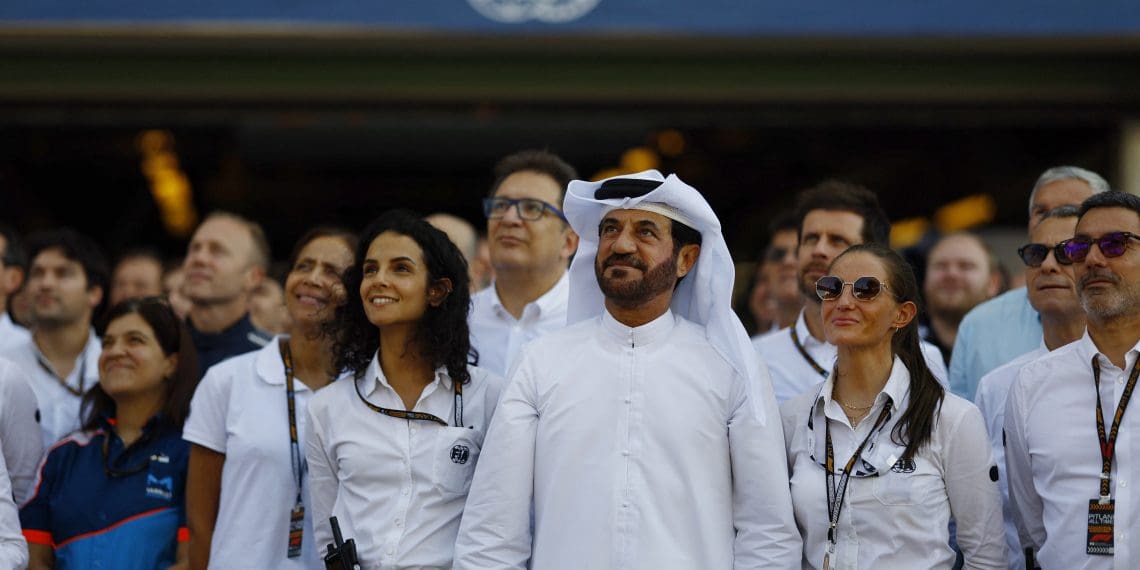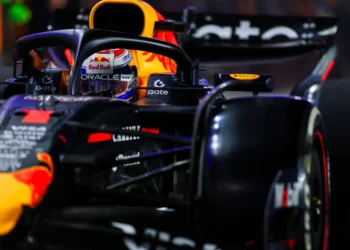Formula 1’s meteoric rise under Liberty Media has ushered in an era of rapid expansion, attracting major manufacturers and global sponsors. With General Motors backing Andretti’s bid to enter the grid, FIA President Mohammed Ben Sulayem believes the next logical step is the arrival of a Chinese manufacturer to solidify F1’s global footprint.
And according to him, China is already halfway there.
China in F1: The Missing Piece?
Speaking to Spanish reporters, Ben Sulayem laid out his vision for the future of Formula 1, emphasizing the need for a Chinese powerhouse to join the sport.
“For a couple of years, I have been dreaming of having all the major countries represented in F1. The United States will be represented by General Motors, and the next step would be the arrival of a major Chinese group. They already have the driver.”
That driver? Zhou Guanyu.
Since 2022, Zhou has been China’s first and only F1 driver, competing for Alfa Romeo (now Stake F1 Team). Although he lost his full-time race seat for 2025, Zhou has landed a key reserve driver role at Ferrari, backing up Lewis Hamilton and Charles Leclerc.
China is already a booming motorsport market, with massive fan engagement and a Formula 1 Grand Prix in Shanghai. Adding a Chinese manufacturer would be the next big move—potentially following in the footsteps of BYD, Geely, or Chery, three of China’s biggest automotive giants.
F1’s Calendar Dilemma: “24 Races is Too Many”
While expansion is crucial, Ben Sulayem is not convinced by the sport’s relentless pursuit of more races.
“I think we need more teams and fewer Grands Prix. 24 is too many, 20 would be enough.”
The 2024 season will feature a record-breaking 24-race calendar, stretching from Bahrain to Abu Dhabi, testing the physical and mental endurance of drivers, teams, and fans alike.
Ben Sulayem believes F1 should focus on adding teams instead of races, balancing new markets with historic circuits.
“Opening up to new countries is a beautiful thing, but we must not forget traditions. I would be happy to see F1 return to France and Germany.”
France and Germany—once F1 powerhouses—have been sidelined, with neither the French Grand Prix nor the German Grand Prix on the current calendar.
The Concorde Agreement permits up to 12 teams on the grid, but for F1 to expand, commercial agreements with Formula One Management (FOM) would be required.
What’s Next for F1?
The push for a Chinese manufacturer comes at a time when Formula 1 is already expanding into key markets, with Audi entering in 2026 and Andretti hoping for a 2026 debut with GM backing.
A Chinese team wouldn’t just add a new name to the grid—it would supercharge F1’s presence in the world’s largest automotive market.
Meanwhile, the battle over F1’s bloated calendar continues. Can the sport balance expansion without overloading its schedule?
With 2026 regulations on the horizon, new manufacturers and fresh teams could define the future of F1—if the FIA and FOM can find common ground.










